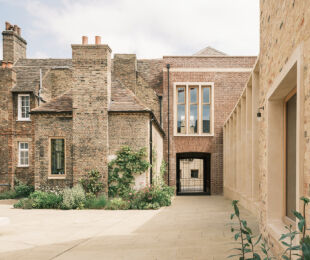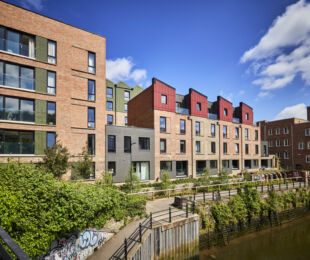
Walthamstow Wetlands is a series of 10 reservoirs, located in the Lea Valley Special Protection Area, which provides drinking water to 3.5 million Londoners. An area of Special Scientific Interest, the 211-hectare site has been transformed into one of Europe’s largest urban Wetland nature reserves.
The collaboration between Thames Water, the London Borough of Waltham Forest and London Wildlife Trust aimed to conserve the heritage and identity of the site, whilst allowing free public access to this unique landscape of water, woods and marshland.
With sustainability and ecology at the heart of the regeneration, architects Witherford Watson Mann worked with Kinnear Landscape Architects to deliver a unique vision, which included the sympathetic restoration and the conversion of a Grade II listed Engine House and a disused neighbouring mill into a new visitor centre and viewing platform. This refurbishment project ultimately became a RIBA National Award winner.
Originally built in 1885, the old Engine House, which once housed massive steam driven pump engines, was restored and converted to accommodate a café and visitor’s centre, with a kitchen extension built from Brown Brindle facing bricks made by Ketley.
Known for their industrial authenticity and durability, these ‘Class A’ engineering bricks suited the context of the site perfectly. Designed to contrast with the softer brick of the existing building, the detailing of the new arches and the English bond pattern followed the same rhythm as the original arcaded brick of the adjacent north wall.
The Engine House roof was also fully restored using Brown Antique plain clay roof tiles made by sister company Dreadnought Tiles.
Integral to the restoration was the replacement of the old Engine House’s original brick chimney, a powerful industrial symbol, which was demolished in 1960.
Witherford Watson Mann grafted a striking new 24m high ‘swift tower’ onto the remaining chimney plinth to serve as an ecological feature to accommodate local wildlife. Constructed from the same Brown Brindle engineering bricks, the structure tapers from 1.5 bricks thick at the bottom to one brick thick at the top, its shiny surface standing out, yet also complementing the Victorian heritage. The brickwork was left rough on the inside to provide roosting areas for swifts and bats.
The tower itself also incorporated 54 bespoke red clay swift boxes co-designed by Ketley and Witherford Watson Mann to encourage the nesting of urban swifts. The only known structure of its type, the now renamed, ‘swift tower’ is visible from across the valley, signalling repair and transformation: repair of civic infrastructure, transformation from pollution to ecology.
Now open to the public for the first time in 150 years, Walthamstow Wetlands is a conservation and restoration project of unique value, which will allow people to access its natural and architectural heritage for many years to come.






